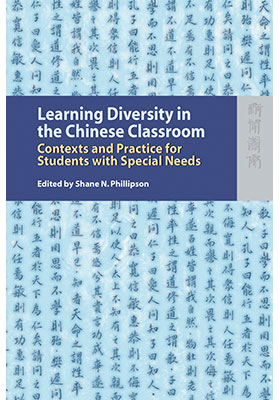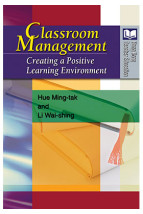Learning Diversity in the Chinese Classroom
Contexts and Practice for Students with Special Needs
(學習多樣性課堂:背景和實踐有特殊需要的學生)
ISBN : 978-962-209-872-5
October 2007
520 pages, 6″ x 9″
Ebooks
Also Available on
A unique feature of Learning Diversity in the Chinese Classroom is its Chinese context for meeting the educational requirements of children with special needs. At a time when many of the currently available texts in the area have a general perspective, Asian teachers and students have long felt the need for a text that specifically recognizes the local context. Learning Diversity in the Chinese Classroom notes that international trends, including those in many Southeast Asian countries are moving toward inclusive education and special needs, and includes chapters on giftedness, counseling and behavior management.
Section 1 of the book describes the context of inclusive education in Asia. Summaries of the special features of the classroom in the region, the conceptions of inclusion and cultural diversity from the perspective of the Asian classroom, and how these are different to the Western classroom are provided.
Section 2 focuses on various approaches to meeting the educational and socio-emotional needs of children in the inclusive classroom. The first part is concerned with theoretical underpinnings of the type of need, and the second part describes examples of how a teacher can cater for this type of diversity according to subject, including mathematics, Chinese, English, information technology, and arts.
Section 3 widens the perspective and describes a whole-school approach to meeting the educational requirements of children with special needs. A systems approach is taken, whereby the success of the inclusive school is dependent on the functioning of a number of interrelated parts. This section draws from recent case studies which describe the approaches taken by a number of schools that have been successful in implementing inclusive education.
Learning Diversity in the Chinese Classroom will appeal to teachers, parents, health professionals who are working with children with special educational needs.
“This book is a timely and valuable contribution to understanding Chinese students with special learning needs in the inclusive environments. It provides useful information, insights and analysis, and serves as a fitting introduction for all pre-service teachers, field practitioners and researchers.” —Ming-Gon John Lian, Honorary Director, Centre for Advancement in Special Education, Faculty of Education, the University of Hong Kong
“Throughout the world educators are seeking ways of responding to the challenge of inclusive education. Stimulated by the UNESCO Salamanca Statement on Special Needs Education, the aim is to find ways of developing schools that can cater for learner diversity. This book is an important contribution to this international movement. It rightly recognizes the need to ‘think globally and act locally.’ That is to say, it is necessary to ensure that educational reforms are relevant to local cultures and traditions. Focusing on ‘students from societies that are based on the Confucian heritage,’ the authors bring together a wealth of experience and knowledge in order to provide both theoretical stimulation and practical advice. I feel sure the book will be widely read and influential in the Chinese world and, indeed, more widely.” —Mel Ainscow, Professor of Education, University of Manchester, UK






